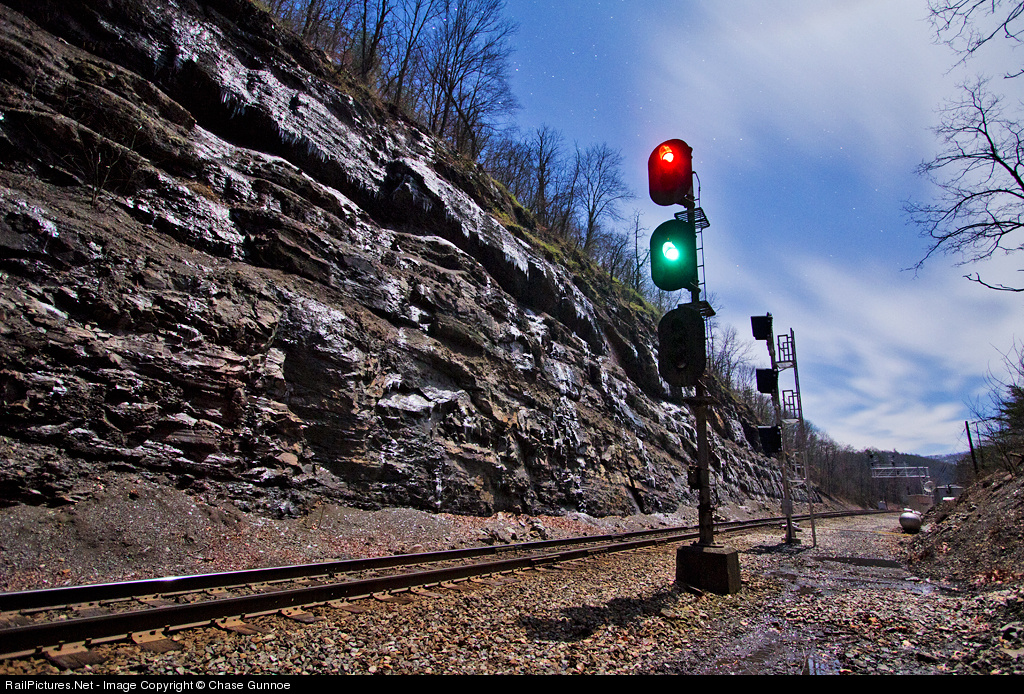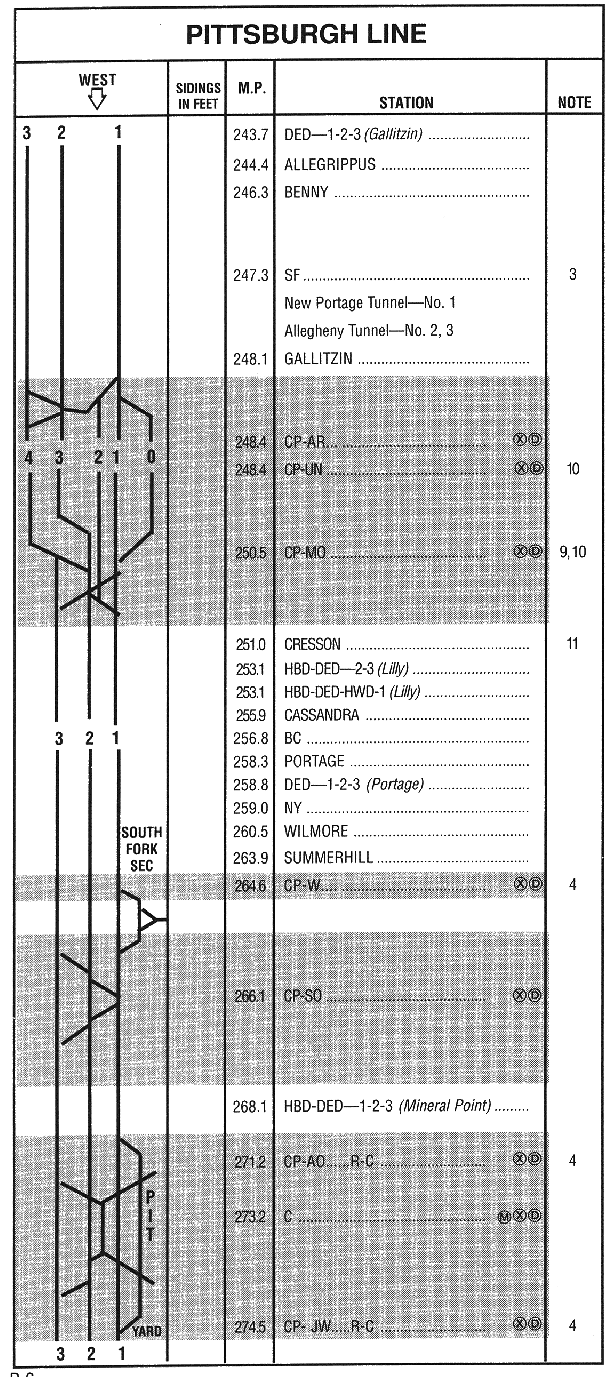The relevant track charts for this segment can be found here.
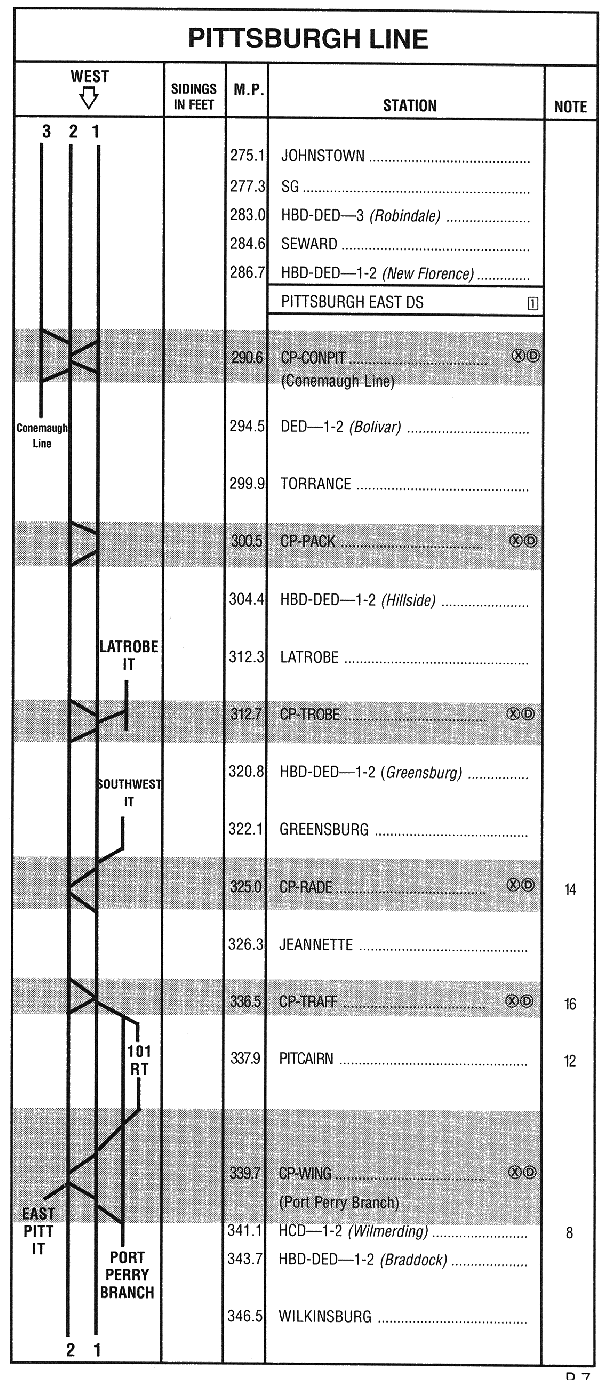
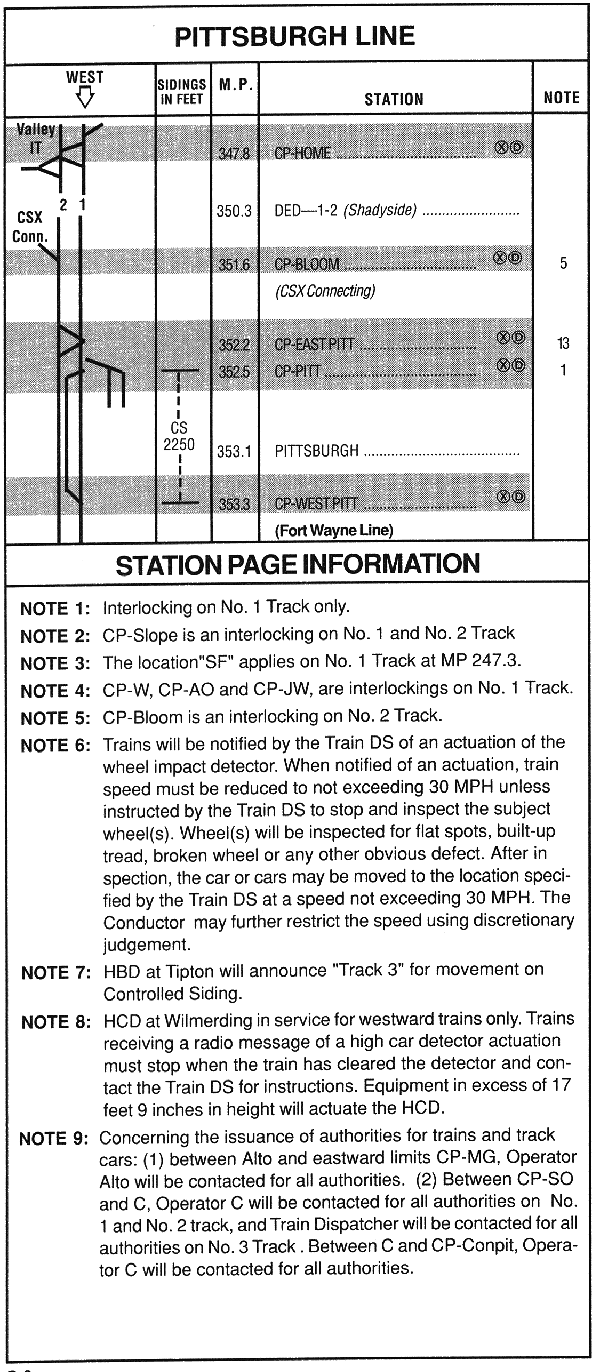
Beginning at Greensburg it is worthwhile mentioning an interesting feature of the right of way that important to the signaling in the area. You may have noticed in part 3.2 that SW tower at Southwest Junction had a western section where the 4-track right of way shrank to three tracks for a pair of tunnels. I mentioned that past CP-CONPIT the main line took off overland across a plateau to reach Pittsburgh directly instead of following the Conemaugh River. This resulted in a steeper grade profile as well as a number of bottlenecks in the Greensburg area in the form of tunnels. The first was located directly east of the station and was eliminated in the 1890's, the second set of tunnels hung around a lot longer and remained an operational headache.
Known as the Radebaugh tunnels after the community west of Greensburgh (which had its own tunnel) the first was built in 1852 as part of the original Main Line project and nearly derailed the entire enterprise as the cost and delays of tunneling began to give the Philadelphia area investors cold feet. The original tunnel was very tight and built on a curvy alignment through the local drainage divide between the Conemaugh and Monongahela rivers. In the 1890's a new, larger tunnel was built on a more direct alignment, at first replacing the original tunnel until traffic levels pressed the 1850's bore back into service to carry a third main track. You can see the two tunnel alignments on this Wiki Map.
http://www.wikimapia.org/#lat=40.311390 ... =Radebaugh
Still, three tunnel tracks on a four track line a bottleneck makes, but adding a 4th track or simply removing the tunnel never became a priority for the PRR so they did the best they could with interlocking design. Directly on each side of the new 1890's tunnel the 3 tracks shrank to 2 via a parallel shift layout with freight track 1 having the forced diverge at each. Track #4, also designated for freight, used the pimple alignment of the 1850's tunnel allowing the designated passenger tracks 2 and 3 the straight shot through.
In 1965 the waning PRR showed some of its old magic when new tunnel was daylighted in a project where the overburden was first removed and then in the space of 11 hours the tunnel roof was blasted and track re-laid with the RoW being widened over time. Track #4 remained in use through the old tunnel on the alternate alignment until the deluge from Hurricane Agnes collapsed it in 1972. The 1980 CTC project under Conrail did the rest permanently making the line two-tracks.
Anyway as I said all this was relevant to signaling as both SW tower east of the tunnels and RG tower, west of the tunnels, were built to deal with the bottleneck. Here we see the location of the new tunnel now just an open cut. In the right of the picture there is an interesting signal facing away from us for traffic on the branch line which is labeled R08. This is a distant signal to the upcoming interlocking and a vestage of the old PRR Manual Block system.
In this view taken in 2004 we see R08 in its original configuration as a PRR Position Light. This signal could display, Approach Medium, Approach and Caution. Approach Medium would display when a train coming off the branch line was had a proceed indication like Medium Clear and Approach would display if the interlocking was showing a Stop indication. Both would show that the track circuited approach block was clear, however if it was not the signal would display a Caution signal which on a PRR PL is \ over a marker light as shown in this photo.
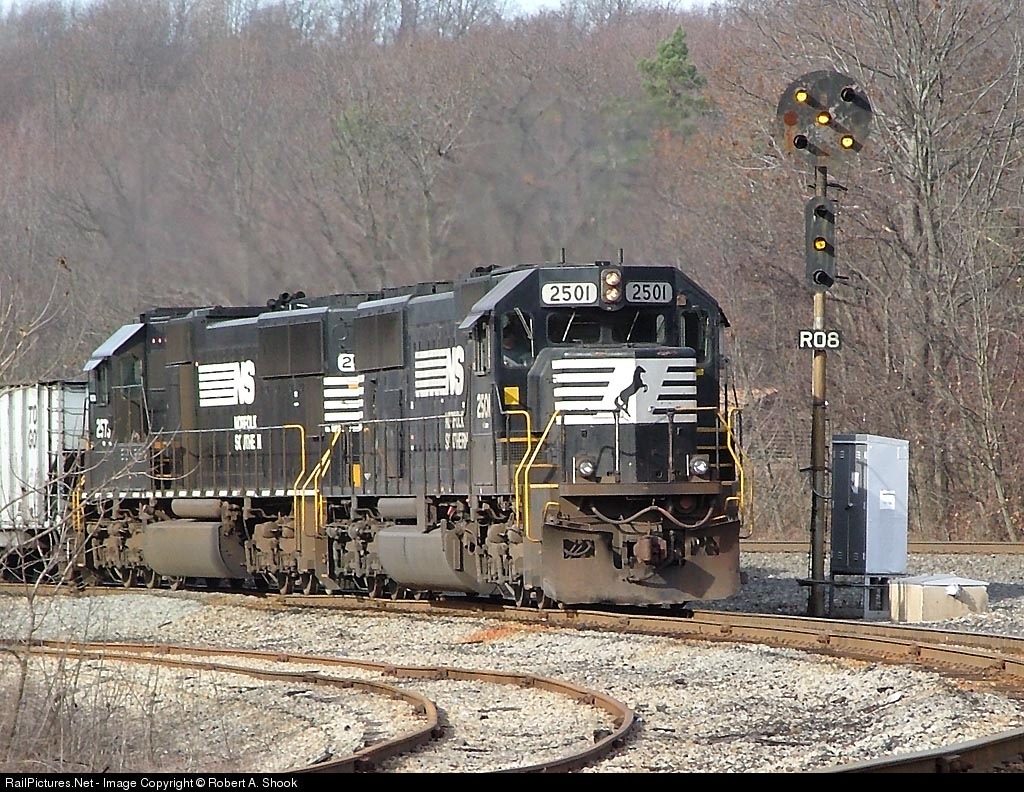
Under NORAC the old PRR signal aspect was joined by other fixed distant styles such as the traditional yellow semaphore held at / with an (A) plate and a single yellow lamp also with an (A) plate. As the owner of the interlocking is responsible for maintaining the distant NS eventually got fed up with supporting a full PRR PL at R08 and "upgraded" it with the single yellow lamp variety sometime around 2006. Here is a front view of the new Approach Restricting signal from Railpictures.net. Not quite the same is it.
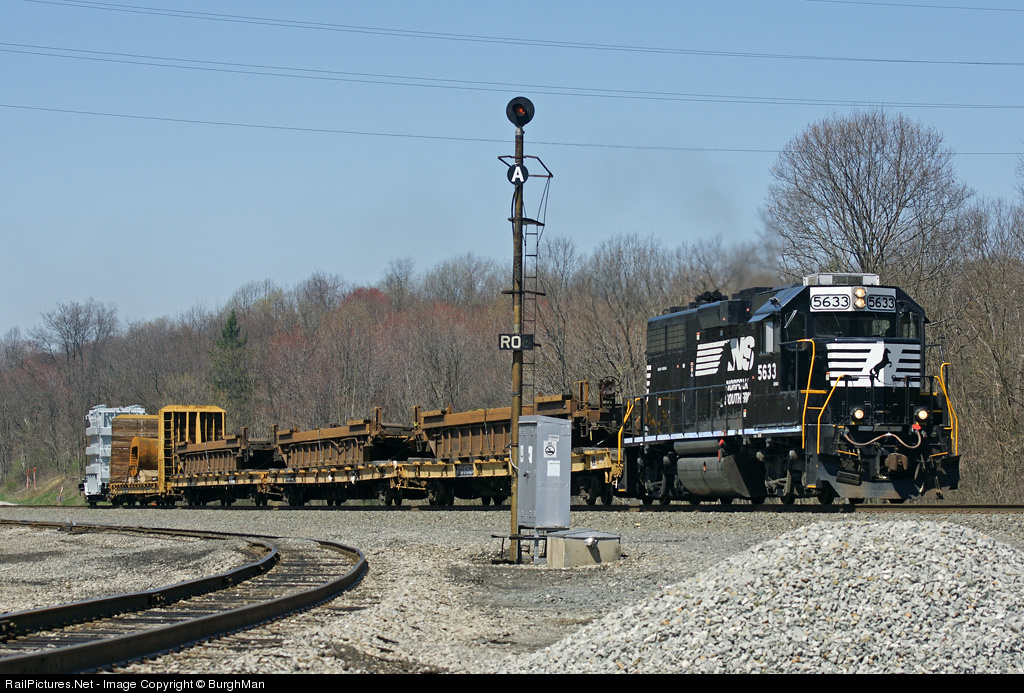
Ok, finally moving on we get to CP-RADE, formerly RG (RadebauGh) interlocking. Built in 1890 as part of the tunnel project RG complimented its neighbor SW and there were actually no intermediate signals between the two. The two towers had to work together to signal trains on the bi-directional tunnel tracks. When built in 1890 electricity was still new-fangled so there wasn't much of a power grid around to power the electro-pneumatic interlocking machine, air operated points and track circuits so RG was actually build with a railroad owned and operated power plant behind it. Pretty amazing that back in the day railroads had to act as both telecom outfits and power companies. Talk about vertical integration! Here is the original diagram of RG, you can see the power plant behind the tower.
Regrettably no trace of RG tower of the power plant remain today, but unlike SW interlocking, RG interlocking is still around in the form of CP-RADE. CP-RADE lost its westbound PRR signal gantry shortly after Norfolk Southern took over Conrail in 1999. The C&S department still had a commitment to target type signals, but was forced to buy from the Safetran catalogue instead of US&S so we have the Safetran style modular lamps with a circular mounting.
The main signal were also re-located a few hundred feet east to provide better visibility for approaching trains. The branch line signal remained at the same location. Note supports for the old PL gantry.
Points were left pneumatic. The switch to the Southwestern Pennsylvania Railroad owned branchline is good for 30mph movements.
The airline looks freshly painted next to the relay hut.
The eastbound signal remains a PRR PL.
The 3284 automatic distant to CP-RADE was also replaced around 2000 and I remember finding photos alerting me to the loss at that time. Signals next to a grade crossing of course creates another popular railfan location. BTW look at the grade profile.
The 3304 automatics were replaced in the Conrail era.
The surviving PRR gantry holding automatic signal 3326 used to be the westbound home signal of CP Interlocking at Larimer, PA. This was another mixing bowl interlocking where the passenger traffic was shifted to tracks 4 and 3 and the freight to tracks 1 and 2. This was due to the upcoming Pitcarin Yard and the desire not to have trains crawling into the yard foul the interlocking plant for passenger trains needing to cross over. For some reason this signal supports 4-block signaling westbound despite a standard sized block length.
Automatic signal 3346 is the distant to CP-TRAFF.





















